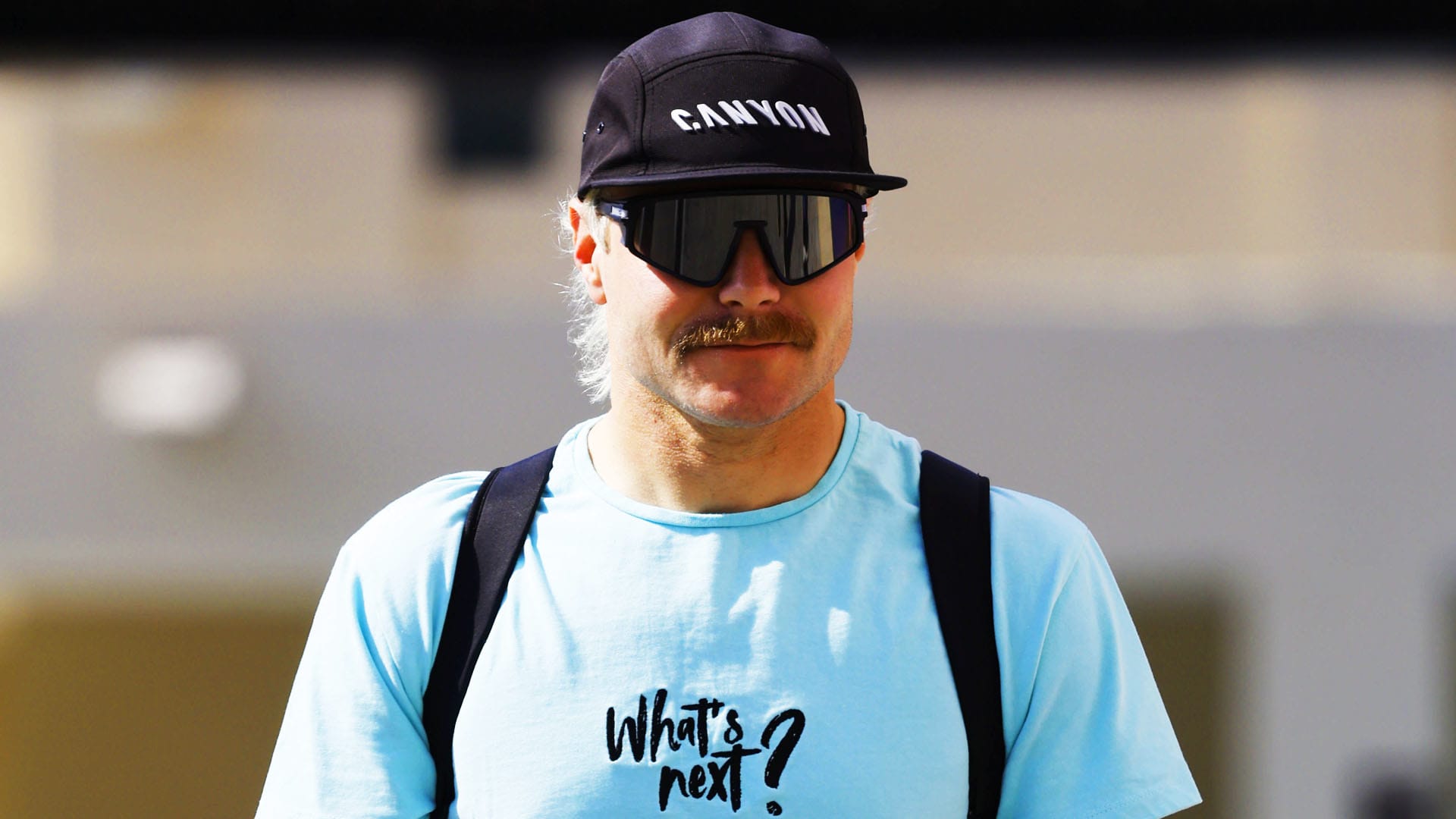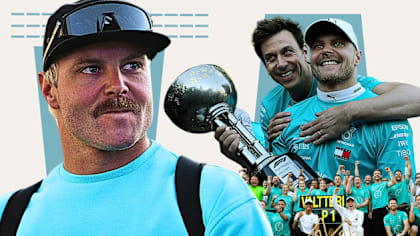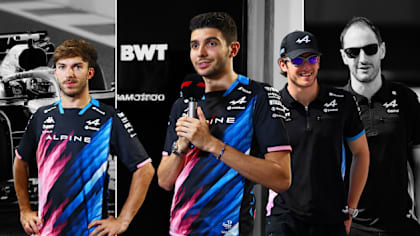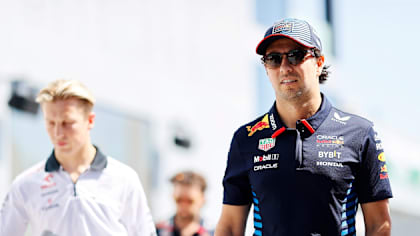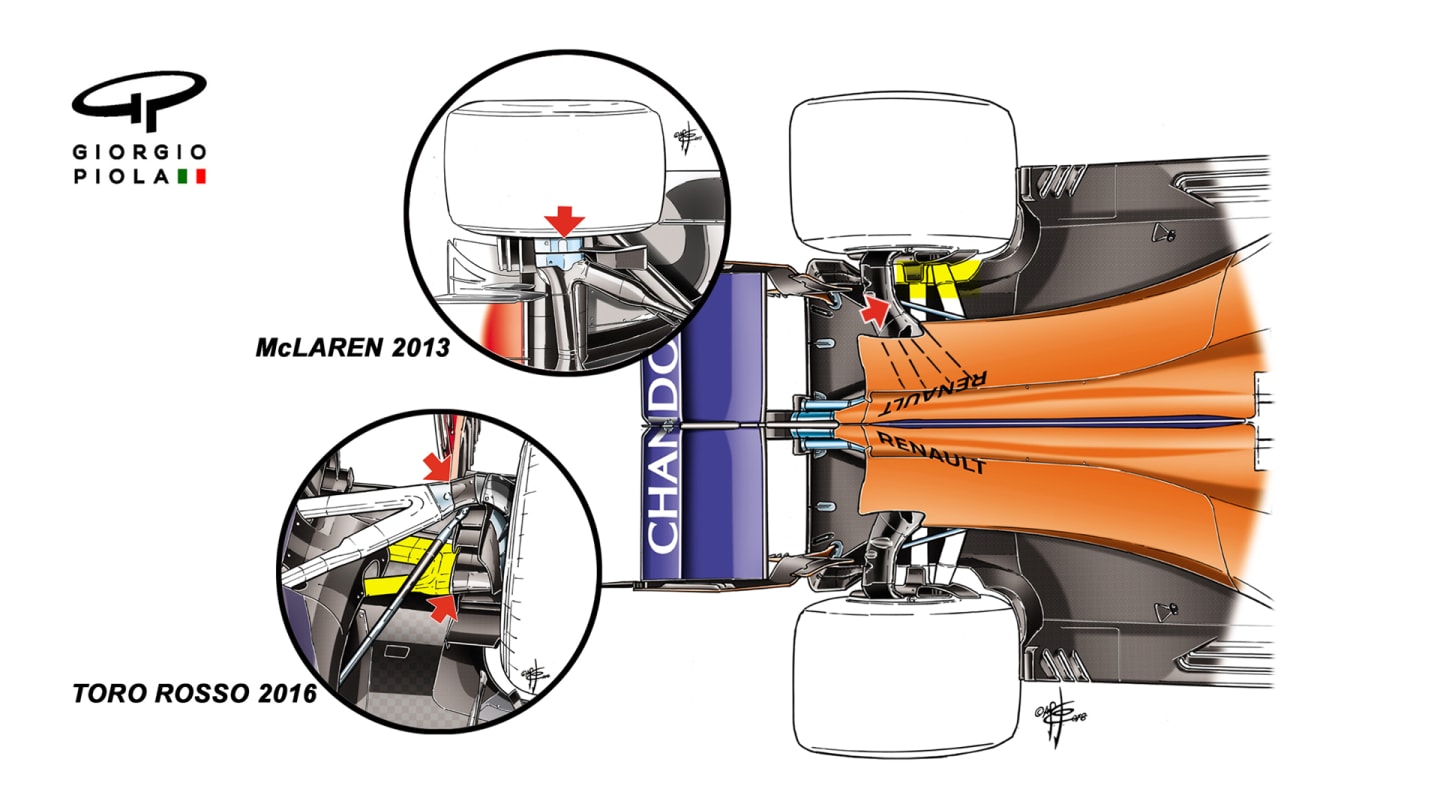
Technical
Tech insight: McLaren’s aggressive rear suspension design
Share

Bad weather meant the teams did over 600 fewer laps at this year’s opening test than 12 months ago – but that didn’t prevent some from unveiling intriguing new technological developments. And one of the more eye-catching came from McLaren…
The Woking team have always been keen on using the rear suspension to improve the aerodynamics at the rear of the car, and the late switch from Honda to Renault power wasn’t going to stop them making it a priority once again for the MCL33.
This year’s super aggressive design (above) sees the team using a big bracket on the top wishbone, similar to what they introduced to F1 for the first time in 2013 (see inset). The top wishbone is angled very far forward, which produces a very narrow triangular shape, not unlike Toro Rosso's lower wishbone of 2016 (see inset).
What makes the design so advantageous aerodynamically is that the pick-up point of the pushrod link is not close to the upright, but nearly in the middle of the top wishbone, freeing up the area around the rear tyre and thereby improving airflow in that area of the car.
Of course, this approach isn’t without its potential drawbacks, and McLaren will have had to have done their sums to make sure the advantage they gain aerodynamically compensates for the handicap of having to make the top wishbone much heavier in order to guarantee the necessary stiffness.
YOU MIGHT ALSO LIKE
News ‘I was 99% sure I was going to continue with Ferrari’ says Sainz, as he admits ‘hurt’ at being replaced by Hamilton
Feature ANALYSIS: Why Bottas' return to Mercedes makes perfect sense for both sides
Feature END OF YEAR REPORT: Alpine – From a nightmare start to a promising finish amid numerous behind-the-scenes changes
Feature ANALYSIS: Perez had a contract for 2025 – so why has his Red Bull journey come to an end now, and who will replace him?
